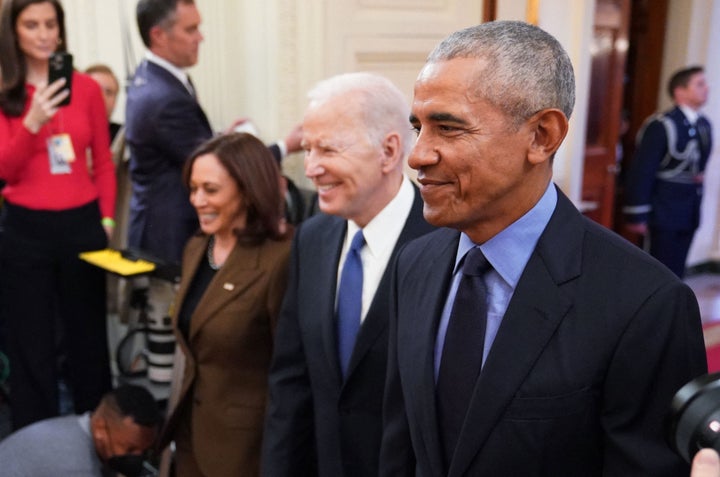
This article is part of HuffPost’s biweekly politics newsletter. do, goes back at least to the 1980s. But efforts to make it happen in the U.S. consistently ran into tough opposition — from conservatives and, especially, from the drug industry.
Advertisement
You could see that opposition at work in 2003 when then-President George W. Bush signed the bill that first created a drug benefit for Medicare. It was Republican legislation that passed with a few votes from more conservative Democrats. Not only did that law fail to give the government price negotiation authority, it explicitly prohibited the federal government from meddling in prices.
The same kind of opposition was again at work in 2009, when then-President Barack Obama and Democratic leaders were trying to pass what became the Affordable Care Act. In order to avoid a fight with the drug industry, which had killed past efforts at expanding insurance coverage, the law’s architects promised to exclude a provision giving the federal government leverage over prices.
The Obama episode was especially instructive. Democrats for a time had a 60-seat, filibuster-proof majority in the Senate. But roughly a third of those were more conservative lawmakers, mostly from formerly Democratic states in the process of turning Republican.
Desperate to hold onto their seats, they were skittish about big Democratic legislation and heavily dependent on drug industry support for their campaigns. Had Obama and Democratic leaders not ceded to the drug industry and the lawmakers over which it held sway, chances are good the Affordable Care Act wouldn’t have passed at all.

MANDEL NGAN via Getty Images
Advertisement
In the decade that followed, most of those Democrats lost their seats, costing the party congressional majorities they only got back in 2018 (in the House) and 2020 (in the Senate). The new Senate majority was the thinnest possible, just 50 seats, but with Harris’ tie-breaker it was enough to pass budget-related legislation and — critically — it had come together mostly with members who were less conservative, less in thrall to Big Pharma, or both.
Among the Senate newcomers in 2020 were two Georgia Democrats, Jon Ossoff and Raphael Warnock; over in the House, the Democratic majority included members such as Michigan’s Elissa Slotkin. All represented constituencies that leaned more red than blue but were trending slowly in a Democratic direction. Not coincidentally, all three lawmakers were wholeheartedly in favor of aggressive action to bring down prescription prices — and all voted “yes” on the IRA reforms.
Still, it wasn’t quite enough to pass strong legislation on prescription prices. Democratic leaders had to wrangle votes from (then-Democratic) Sen. Kyrsten Sinema of Arizona and a group of House counterparts with ties to drug lobbies. The price these lawmakers extracted was compromise that limited the reforms — by, for example, narrowing the scope of drugs subject to negotiation and nixing extension of some price limits beyond Medicare.
It’s an instructive lesson in the way even tiny, one-time changes in election outcomes can have big, far-reaching effects on policy. It’s hard not to imagine that, in a world where Democrats had just a handful of more votes back in 2022, they could have passed significantly stronger drug pricing reforms ― making a wider array of drugs subject to price negotiation, for example, or extending some of the reforms outside of Medicare.
They might have even secured some of the other policy goals they had been seeking, like creating a paid leave program or making big investments in child care.
Advertisement
Conversely, in a world where Democratic caucuses were slightly smaller, they probably would have gotten even less. Or maybe nothing at all.
What was true in the past is just as true now heading into November, and not just because so much is riding on the presidential race. The difference of just two or three House members, or a single measly senator, could be the difference between future legislation that does a lot or does a little ― or doesn’t happen at all.
